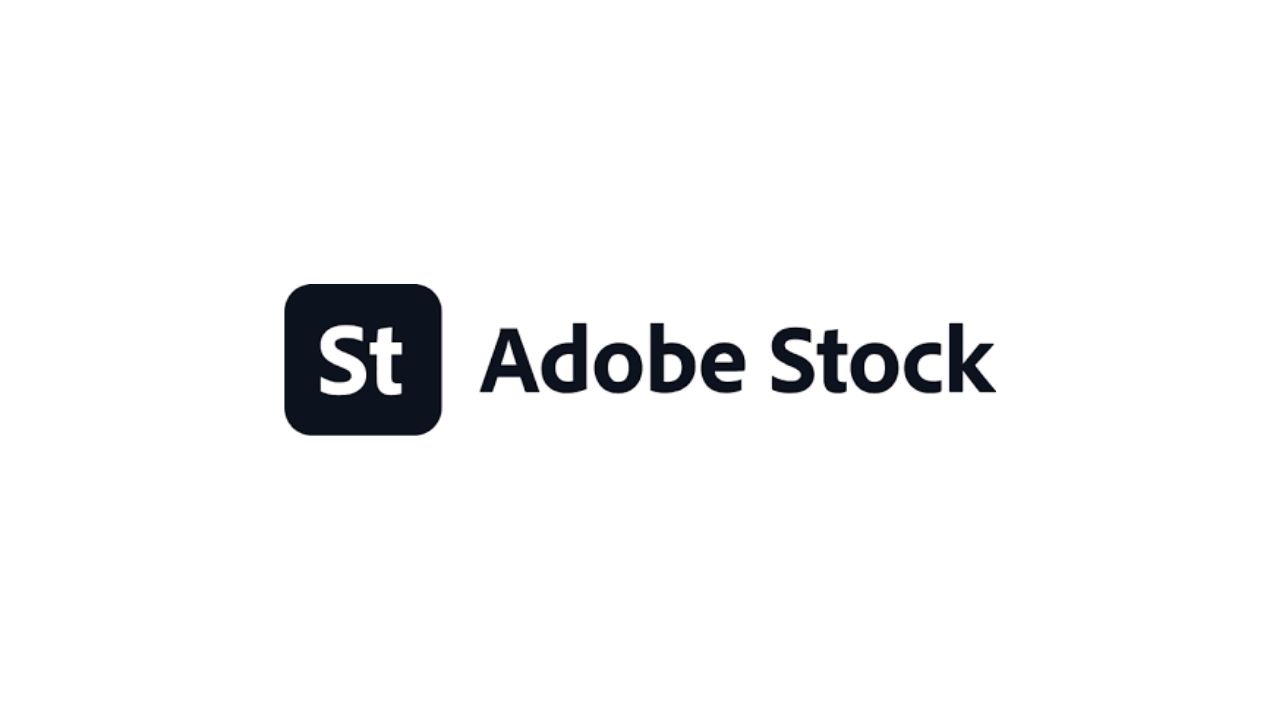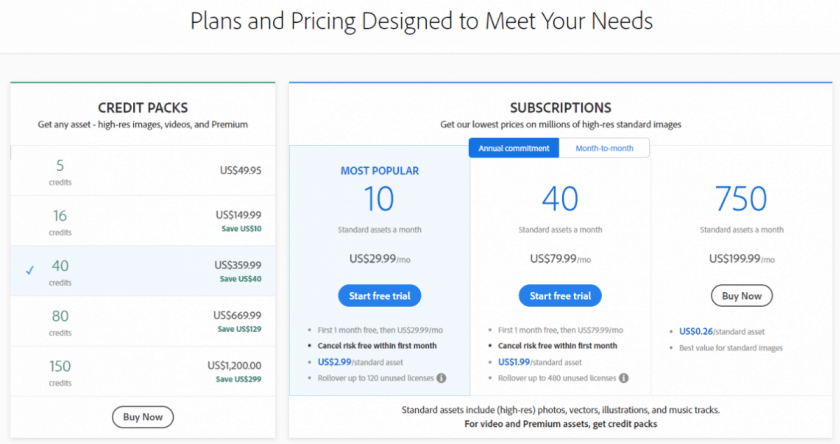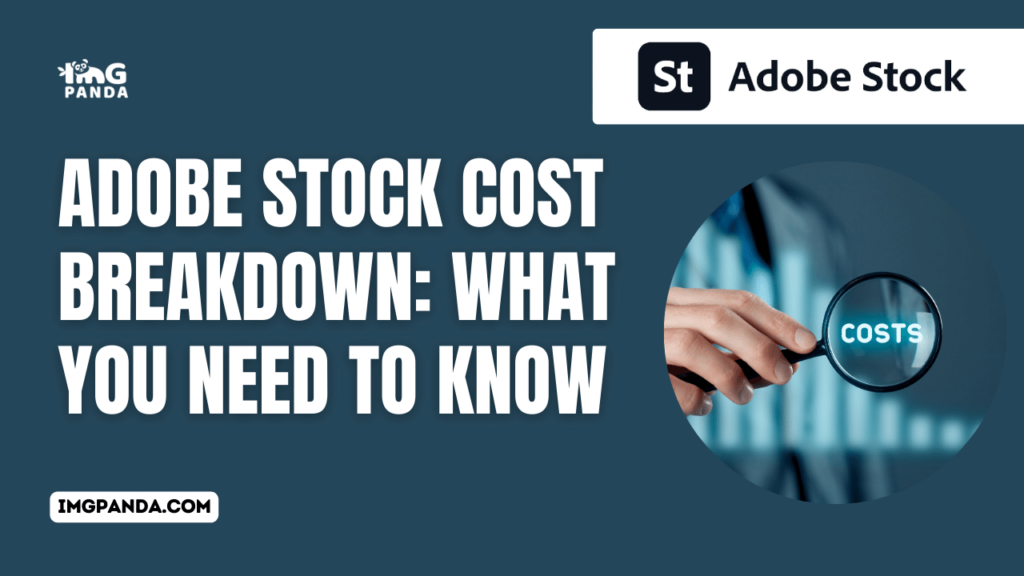Introduction
Adobe Stock is a popular resource for creative professionals seeking high-quality stock photos, videos, and other visual assets to enhance their projects. Whether you are a graphic designer, web developer, or content creator, Adobe Stock offers a vast library of content to help you bring your ideas to life. However, before diving into the world of Adobe Stock, it's essential to understand the cost breakdown, pricing models, and factors that can influence your expenses. In this blog post, we will guide you through everything you need to know about Adobe Stock pricing, ensuring you can make informed decisions and get the most out of this valuable resource.
Also Read This: Can You Post GIFs on LinkedIn to Enhance Your Professional Posts
What is Adobe Stock?

Adobe Stock is a comprehensive stock photo and video platform provided by Adobe, a renowned name in the world of creative software. It serves as a valuable resource for designers, marketers, and content creators, offering a vast collection of high-quality visual assets. Here's a closer look at what Adobe Stock is all about:
1. Extensive Library: Adobe Stock boasts an extensive and diverse library containing millions of stock photos, illustrations, vectors, videos, and 3D assets. You can find content to suit a wide range of creative projects, from website design to marketing campaigns and more.
2. Integration with Adobe Creative Cloud: One of the standout features of Adobe Stock is its seamless integration with Adobe's Creative Cloud suite of applications, such as Adobe Photoshop, Illustrator, and InDesign. This integration makes it easy for users to browse, license, and incorporate Adobe Stock assets directly into their creative projects, saving time and effort.
3. Quality Assurance: Adobe Stock maintains high-quality standards for its content. Many images and videos are produced by professional photographers and videographers, ensuring that you receive top-notch assets for your creative work.
4. Licensing Options: Adobe Stock offers different licensing options, including standard licenses and extended licenses, allowing you to choose the appropriate level of usage rights for your projects. Standard licenses are suitable for most uses, while extended licenses provide more flexibility, such as for resale products.
5. Preview and Watermarked Images: Adobe Stock allows you to preview and work with watermarked images before purchasing, ensuring you can test how they fit into your projects before committing to a purchase.
6. Keyword and Content Tags: Finding the right content is made easier with robust search features and content tags. You can search for assets by keywords, color schemes, orientation, and more, making it simple to find the perfect image or video for your needs.
7. Royalty-Free: Most Adobe Stock content is offered on a royalty-free basis. This means that once you've licensed an asset, you can use it in multiple projects without incurring additional fees, making it a cost-effective option for your creative endeavors.
8. Editorial and Commercial Content: Adobe Stock provides both editorial and commercial content. Editorial content is suitable for non-promotional uses, while commercial content is ideal for marketing and advertising purposes.
9. Regular Updates: The Adobe Stock library is constantly updated with new content, keeping your creative projects fresh and on-trend.
In summary, Adobe Stock is a powerful platform that simplifies the process of finding and licensing high-quality visual assets for creative professionals. With its integration into Adobe's suite of creative software, extensive library, and diverse licensing options, it's a valuable tool for anyone looking to enhance their creative work with stunning visuals.
Also Read This: How to Unblock Content Using Fortiguard Downloader
Understanding Adobe Stock Pricing
[caption id="attachment_193952" align="alignnone" width="840"] Understanding Adobe Stock Pricing[/caption]
Understanding Adobe Stock Pricing[/caption]
Adobe Stock offers a variety of pricing models to cater to the diverse needs of its users. To make the most of this resource and avoid any surprises in terms of costs, it's crucial to understand the pricing structure. Let's break it down:
1. Subscription Plans: Adobe Stock primarily operates on a subscription-based model. Subscribers pay a monthly fee to access a specific number of assets per month. There are different subscription tiers available, offering various levels of access, such as 10, 40, or 750 assets per month. This is an excellent choice for users who require a consistent flow of images and want to save on costs in the long run.
2. On-Demand Credits: For users who need flexibility or have occasional image needs, Adobe Stock also provides on-demand credits. With this model, you can purchase a pack of credits and use them to buy assets as needed. The more credits you buy upfront, the more cost-effective it becomes per asset.
3. Standard Licensing: Most Adobe Stock assets are available for standard licensing. With a standard license, you can use the content in various projects, including web design, marketing materials, and more, without limitations. This option is suitable for most users and projects.
4. Extended Licensing: In some cases, you might need additional usage rights, such as the ability to use the content in merchandise for resale. Adobe Stock offers extended licenses for these situations, allowing for more extensive commercial use. However, extended licenses come at a higher cost.
5. Pricing Tiers: Adobe Stock has different pricing tiers based on the image resolution. Typically, you'll find assets available in standard and premium quality. Premium assets, often with higher resolutions, come at a slightly higher price point. This gives you the flexibility to choose the image quality that best suits your project's needs.
6. Roll-Over Feature: Some subscription plans offer a roll-over feature, allowing unused monthly credits to carry over to the next month. This ensures that you don't lose any credits if you haven't used your full quota in a given month.
Adobe Stock Pricing Table
| Plan | Price per Month | Assets per Month |
|---|---|---|
| Basic Plan | $29.99 | 10 |
| Standard Plan | $79.99 | 40 |
| Premium Plan | $199.99 | 750 |
It's important to review the pricing options carefully and choose the one that aligns with your specific needs. Whether you're a small business owner, a freelance designer, or part of a larger creative team, understanding Adobe Stock's pricing structure will help you manage your budget while accessing the quality visual assets you require for your projects.
Also Read This: How to Make a YouTube Video a Ringtone for Your Phone in Just a Few Steps
Factors Affecting Adobe Stock Costs
When using Adobe Stock, it's important to be aware of the various factors that can influence your costs. Understanding these factors will help you make cost-effective decisions while accessing the assets you need for your projects. Here are the key elements that affect Adobe Stock costs:
1. Subscription Plan: Your choice of subscription plan plays a significant role in determining your costs. The number of assets you can download each month and the plan you select, such as a basic plan or a premium plan, will affect your monthly expenses.
2. Asset Type: The type of assets you require can impact costs. Premium assets, which are typically of higher quality or resolution, may cost more per download compared to standard assets. It's essential to consider the specific needs of your project when choosing the asset type.
3. Licensing: The licensing model you select is another critical factor. Standard licenses allow you to use the content in various projects, while extended licenses come at a higher cost and provide broader usage rights. Make sure you choose the right license for your intended use to avoid any legal issues.
4. Image Resolution: The resolution of the image you choose can affect the price. Higher resolution images are generally more expensive. If you don't need extremely high-quality images for your project, opting for lower resolution can help you save on costs.
5. Frequency of Use: If you have ongoing or consistent image needs, a subscription plan might be more cost-effective than purchasing on-demand credits for each individual asset. For sporadic users, on-demand credits can provide flexibility without committing to a monthly plan.
Adobe Stock Cost-Saving Tips
If you want to manage your Adobe Stock costs effectively, consider the following tips:
-
- Plan Ahead: Assess your project requirements and select the appropriate subscription plan or credit pack to match your anticipated usage.
- Utilize Roll-Over Credits: If your plan offers roll-over credits, make sure to take advantage of unused credits in the following months.
- Carefully Choose Licensing: Select the licensing model that suits your project's needs to avoid overpaying for usage rights you don't require.
- Optimize Image Resolution: Choose the resolution that matches your project's requirements. Avoid paying for higher resolutions when a lower one suffices.
- Regularly Review Your Plan: Periodically assess whether your subscription plan aligns with your current needs, and consider upgrading or downgrading accordingly.
Cost-Effective Image Resolution Table
| Resolution | Price per Download |
|---|---|
| Low | $4.99 |
| Medium | $7.99 |
| High | $12.99 |
By understanding the factors that impact Adobe Stock costs and implementing cost-saving strategies, you can make the most of this resource while managing your budget effectively.
Also Read This: Is ShootProof a Website or Something More?
Comparing Adobe Stock to Other Stock Services
When it comes to choosing a stock photo and video service, Adobe Stock is just one of many options available. To make an informed decision, it's essential to compare Adobe Stock with other similar services. Here's a detailed comparison to help you understand how Adobe Stock stacks up against the competition:
Adobe Stock
-
-
- Integration with Adobe Creative Cloud: Adobe Stock seamlessly integrates with Adobe's creative software, allowing users to access and edit assets directly within their design projects.
- Quality Assurance: Adobe Stock maintains high-quality standards, with many professional-grade assets.
- Regular Updates: The library is frequently updated with fresh content.
- Subscription Plans: Offers subscription plans for regular users and on-demand credits for occasional users.
- Licensing Options: Provides standard and extended licensing options.
-
Shutterstock
-
-
- Large Library: Shutterstock is known for its vast library of images, videos, and music.
- Frequent Updates: Content is regularly added to the collection.
- Pricing Flexibility: Offers subscription plans, but also allows the purchase of individual assets.
- Standard Licensing: Provides a straightforward standard licensing model.
-
Getty Images
-
-
- Premium Content: Getty Images is renowned for its premium and high-quality assets.
- Editorial Content: Offers a wide range of editorial content for journalistic use.
- Custom Solutions: Provides custom pricing for unique enterprise needs.
- Exclusive Content: Some content is exclusive to Getty Images.
-
Pexels
-
-
- Free Assets: Pexels offers a vast collection of free assets that can be used without cost.
- Community-Contributed: Much of the content is contributed by photographers and artists from the Pexels community.
- Limited Licensing: Primarily offers assets for personal and commercial use under a standard license.
-
Cost Comparison
| Service | Subscription Plans | Standard License Cost |
|---|---|---|
| Adobe Stock | Starting from $29.99/month | $9.99 per image |
| Shutterstock | Starting from $49/month | $9.16 per image (10 images/month) |
| Getty Images | Custom pricing | Varies based on usage |
| Pexels | Free and Premium plans available | Free for basic usage |
Each stock service has its strengths and caters to different user needs. Adobe Stock stands out with its seamless integration into Adobe's creative suite, ensuring a streamlined design process. Shutterstock offers a vast collection with pricing flexibility. Getty Images is known for its premium content and custom solutions, while Pexels is a popular choice for those seeking free assets. To make the best choice, consider your specific project requirements, budget, and licensing needs.
Also Read This: How to Insert a YouTube Video into Email for Easy Sharing with Friends
FAQs About Adobe Stock Pricing
Understanding Adobe Stock pricing can be crucial for effective usage. Here are some frequently asked questions (FAQs) to help clarify any doubts you may have about the pricing structure:
- How can I save on Adobe Stock costs?
You can save on Adobe Stock costs by choosing a subscription plan that matches your needs and by carefully selecting the appropriate licensing model. Review your plan regularly to ensure it aligns with your current usage requirements. - What is the difference between a standard license and an extended license?
A standard license allows you to use Adobe Stock content in various projects without limitations, whereas an extended license provides broader usage rights, including the ability to use content in merchandise for resale. - Are there any hidden fees when using Adobe Stock?
Adobe Stock is transparent about its pricing, and there are no hidden fees. You pay the stated subscription fee or the price for on-demand credits, and the cost of licensing is clear upfront. - Can I cancel my Adobe Stock subscription at any time?
Yes, you can cancel your Adobe Stock subscription at any time. Be sure to review the cancellation terms associated with your specific plan to understand any potential fees or restrictions. - Do I need to credit the author when using Adobe Stock content?
No, you do not need to credit the author when using Adobe Stock content under a standard license. However, providing credit is appreciated but not mandatory. With an extended license, no attribution is required.
These FAQs should provide you with a clear understanding of Adobe Stock pricing, ensuring you can make informed decisions when using this valuable resource for your creative projects.
Conclusion
Adobe Stock is a versatile and valuable resource for creative professionals, offering a vast collection of high-quality stock photos, videos, and other visual assets. As we wrap up our discussion on Adobe Stock pricing, here are some key takeaways to keep in mind:
Make Informed Choices: Understanding Adobe Stock's pricing structure, subscription options, and licensing models is essential to make informed choices that suit your project requirements and budget.
Tailored Plans: Adobe Stock provides a range of subscription plans and on-demand credits, allowing you to choose the option that aligns with your usage patterns, whether you're a regular user or an occasional downloader.
Licensing Matters: Select the right licensing model for your intended use. Standard licenses are suitable for most projects, while extended licenses provide broader usage rights for specific needs.
Budget Management: Periodically review your subscription plan to ensure it meets your current needs. By managing your plan effectively, you can save on costs and access the content you require.
Seamless Integration: Adobe Stock's integration with Adobe Creative Cloud simplifies your workflow, allowing you to find, license, and incorporate assets directly into your design projects.
Explore Alternatives: While Adobe Stock is a robust platform, consider exploring other stock services like Shutterstock, Getty Images, or Pexels to find the one that best suits your specific requirements.
In summary, Adobe Stock pricing is designed to provide flexibility and choice for creative professionals. By taking advantage of the options available and understanding how pricing works, you can maximize the value of Adobe Stock while managing your budget effectively. Whether you're a designer, marketer, or content creator, Adobe Stock offers a rich repository of assets to enhance your projects and bring your creative visions to life.
